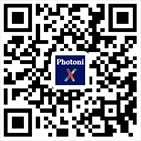| [1] |
Fenster A, Downey DB, Cardinal HN. Three-dimensional ultrasound imaging. Phys Med Biol. 2001;46(5):R67.
|
| [2] |
Hsieh J. Computed tomography: principles, design, artifacts, and recent advances. SPIE press, 2003.
|
| [3] |
Rooney W. MRI: from picture to proton. Health Phys. 2003;85(4):504–5.
|
| [4] |
Bailey D L, Maisey M N, Townsend D W, et al. Positron emission tomography. London: Springer; 2005.
|
| [5] |
Ntziachristos V. Going deeper than microscopy: the optical imaging frontier in biology. Nat Methods. 2010;7(8):603.
|
| [6] |
Sharpe J, Ahlgren U, Perry P, et al. Optical projection tomography as a tool for 3D microscopy and gene expression studies. Science. 2002;296(5567):541–5.
|
| [7] |
Power RM, Huisken J. A guide to light-sheet fluorescence microscopy for multiscale imaging. Nat Methods. 2017;14(4):360.
|
| [8] |
Hermann B, Fernández E, Unterhuber A, et al. Adaptive-optics ultrahigh-resolution optical coherence tomography. Opt Lett. 2004;29(18):2142–4.
|
| [9] |
Benalcazar WA, Jung W, Boppart SA. Aberration characterization for the optimal design of high-resolution endoscopic optical coherence tomography catheters. Opt Lett. 2012;37(6):1100–2.
|
| [10] |
Zawadzki RJ, Jones SM, Olivier SS, et al. Adaptive-optics optical coherence tomography for high-resolution and high-speed 3D retinal in vivo imaging. Opt Express. 2005;13(21):8532–46.
|
| [11] |
Jang J, Lim J, Yu H, et al. Complex wavefront shaping for optimal depth-selective focusing in optical coherence tomography. Opt Express. 2013;21(3):2890–902.
|
| [12] |
Ginner L, Kumar A, Fechtig D, et al. Noniterative digital aberration correction for cellular resolution retinal optical coherence tomography in vivo. Optica. 2017;4(8):924–31.
|
| [13] |
Hillmann D, Spahr H, Hain C, et al. Aberration-free volumetric high-speed imaging of in vivo retina. Sci Rep. 2016;6:35209.
|
| [14] |
Adie SG, Graf BW, Ahmad A, et al. Computational adaptive optics for broadband optical interferometric tomography of biological tissue. Proc Natl Acad Sci. 2012;109(19):7175–80.
|
| [15] |
Shemonski ND, South FA, Liu Y-Z, et al. Computational high-resolution optical imaging of the living human retina. Nat Photonics. 2015;9(7):440.
|
| [16] |
Ahmad A, Shemonski ND, Adie SG, et al. Real-time in vivo computed optical interferometric tomography. Nat Photonics. 2013;7(6):444.
|
| [17] |
Yasuno Y, Sugisaka J-i, Sando Y, et al. Non-iterative numerical method for laterally superresolving Fourier domain optical coherence tomography. Opt Express. 2006;14(3):1006–20.
|
| [18] |
Kumar A, Drexler W, Leitgeb RA. Numerical focusing methods for full field OCT: a comparison based on a common signal model. Opt Express. 2014;22(13):16061–78.
|
| [19] |
Ralston TS, Marks DL, Carney PS, et al. Interferometric synthetic aperture microscopy. Nat Phys. 2007;3(2):129.
|
| [20] |
Mo J, de Groot M, de Boer JF. Focus-extension by depth-encoded synthetic aperture in optical coherence tomography. Opt Express. 2013;21(8):10048–61.
|
| [21] |
Bo E, Luo Y, Chen S, et al. Depth-of-focus extension in optical coherence tomography via multiple aperture synthesis. Optica. 2017;4(7):701–6.
|
| [22] |
Bo E, Ge X, Wang L, et al. Multiple aperture synthetic optical coherence tomography for biological tissue imaging. Opt Express. 2018;26(2):772–80.
|
| [23] |
Cui D, Liu X, Zhang J, et al. Dual spectrometer system with spectral compounding for 1-μm optical coherence tomography in vivo. Opt Lett. 2014;39(23):6727–30.
|
| [24] |
Liu L, Gardecki JA, Nadkarni SK, et al. Imaging the subcellular structure of human coronary atherosclerosis using micro–optical coherence tomography. Nat Med. 2011;17(8):1010.
|
| [25] |
Chu KK, Kusek ME, Liu L, et al. Illuminating dynamic neutrophil trans-epithelial migration with micro-optical coherence tomography. Sci Rep. 2017;7:45789.
|
| [26] |
Gora MJ, Sauk JS, Carruth RW, et al. Tethered capsule endomicroscopy enables less invasive imaging of gastrointestinal tract microstructure. Nat Med. 2013;19(2):238–40.
|
| [27] |
Gora MJ, Suter MJ, Tearney GJ, et al. Endoscopic optical coherence tomography: technologies and clinical applications. Biomed Opt Express. 2017;8(5):2405–44.
|
| [28] |
Liang K, Traverso G, Lee H-C, et al. Ultrahigh speed en face OCT capsule for endoscopic imaging. Biomed Opt Express. 2015;6(4):1146–63.
|
| [29] |
Lan G, Li G. Design of a k-space spectrometer for ultra-broad waveband spectral domain optical coherence tomography. Sci Rep. 2017;7:42353.
|
| [30] |
Siddiqui M, Nam AS, Tozburun S, et al. High-speed optical coherence tomography by circular interferometric ranging. Nat Photonics. 2018;12(2):111.
|
| [31] |
Meites S. Skin-puncture and blood-collecting technique for infants: update and problems. Clin Chem. 1988;34(9):1890–4.
|
| [32] |
Shah VS, Taddio A, Bennett S, et al. Neonatal pain response to heel stick vs venepuncture for routine blood sampling. Arch Dis Child Fetal Neonatal Ed. 1997;77(2):F143–4.
|
| [33] |
Chirivella I, Bermejo B, Insa A, et al. Impact of chemotherapy dose-related factors on survival in breast cancer patients treated with adjuvant anthracycline-based chemotherapy. J Clin Oncol. 2006;24(18_suppl):668.
|
| [34] |
Clamp AR, Ryder WDJ, Bhattacharya S, et al. Patterns of mortality after prolonged follow-up of a randomised controlled trial using granulocyte colony-stimulating factor to maintain chemotherapy dose intensity in non-Hodgkin’s lymphoma. Br J Cancer. 2008;99(2):253.
|
 点击查看大图
点击查看大图








 下载:
下载:

